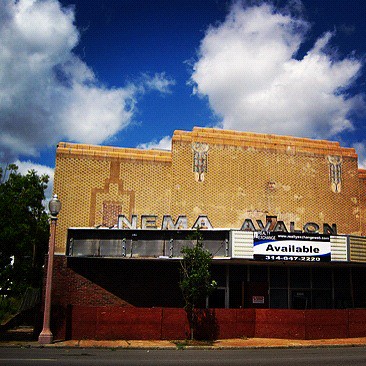
The Avalon Theater is a complicated story. Quite often, a building is demolished and its fate has little to do with the building itself. This is frequently lost in the discussion regarding preservation and the effort to preserve a sense of place. People often think buildings that work are saved and unsafe, ugly, or otherwise unusable buildings are demolished. Not so. The building, its architectural merit, its structural soundness, plays a part – if a building isn't architecturally significant, or is damaged, why should it be saved? The proverbial market plays a part – if no one buys the building and rehabs it, why should it be preserved? Politics, city ordinances and owners play a part – if no ordinance stands in the way of a building's demolition, why should it be saved? In retrospect, it's easy (and wrong) to conclude that a "saved" building met some list of objective criteria and that one no longer standing simply did not. All of which should and will be the subject of future articles.
Michael focuses on the once city-wide preservation ordinance that changed in 1999, allowing alderman to remove their ward from review, further elevating individuals often elected with 500 or fewer votes to the role of planner and developer for some of the region's greatest built assets. If still in effect, the merits and possibilities of the Avalon would have been publicly discussed. It's an important story, but the issue here appears to be an arbitrary deadline set by an inexperienced Alderperson, who chose to ignore investor interest and failed to understand the National Register of Historic Places timeline and process. By our account, the Avalon's owner didn't want to demolish the building (he had recently dropped the asking price from more than $900K to $250K, sparking investor interest), but under threat of emergency demolition and the resulting bill, was left with no choice. To be clear, this is what happens when an Alderperson is allowed to play planner and developer. If the city's Land Reutilization Authority had been able to acquire the property, the result would have been different. How many times can one say that? What to expect next? The photo below with Jack in the Box and Applebee's signs behind the fading Avalon say it all.
Here's the take on the Avalon from Michael Allen at the Preservation Research Office:
Without Review, Avalon Theater Demolition Underway
One day after my call for an imaginative path away from demolition of the Avalon Theater, wreckers started destroying the south city landmark. This morning, after considering it since December 22, the Building Division approved the demolition permit. Down came theater walls and steel trusses, headed up to North Broadway scrap yards.
If the Avalon had been protected under the city’s preservation ordinance, the demolition permit would have required the additional approval of the city’s Cultural Resources Office. Failure to get that approval would have caused a denial of the application.

Unfortunately, the 14th Ward is not in preservation review, and the Avalon had no local or national landmark status that would have led to review under the preservation ordinance. Yet the Avalon was eligible for National Register of Historic Places listing, on its own or as a contributing resource to larger districts.


Had the Avalon demolition been proposed prior to 1999, there would have been preservation review. The city’s preservation ordinance once applied equal review to all buildings across the city. That system was predictable to residents, property owners, city officials and preservation advocates. Under the previous preservation ordinance, many buildings were approved for demolition. Others were spared.

Today, disparate outcomes remain the case under the city’s ordinance, but in a different way. If a building is located in one of the city’s 20 wards whose aldermen opt for demolition review, that building stands a good chance of being spared when demolition is proposed. If a building is not, well, it is likely to disappear without so much as a photo on Flickr.
Yet the Avalon Theater had such visibility and affection in this city that its loss is not going down quietly. Across social media today, news of the start of demolition spread. News of proposed demolition had just started spreading. This could have led to public input in the process prescribed by the city’s preservation ordinance, and it may have led to a denied application.
After all, the ordinance exists to protect those buildings of significance to the entire city — and one of the last remaining neighborhood movie houses is exactly the sort of building the ordinance is designed to protect. The debate we should have had would have centered on the standards of the ordinance — not on Greg Tsevis and his family’s ownership or an elected official who has no authority over the demolition permit. That is the sort of debate we will have next week when the Preservation Board considers demolition of the old Southern Funeral Home on South Grand. Alas, the Avalon was at least as worthy.


